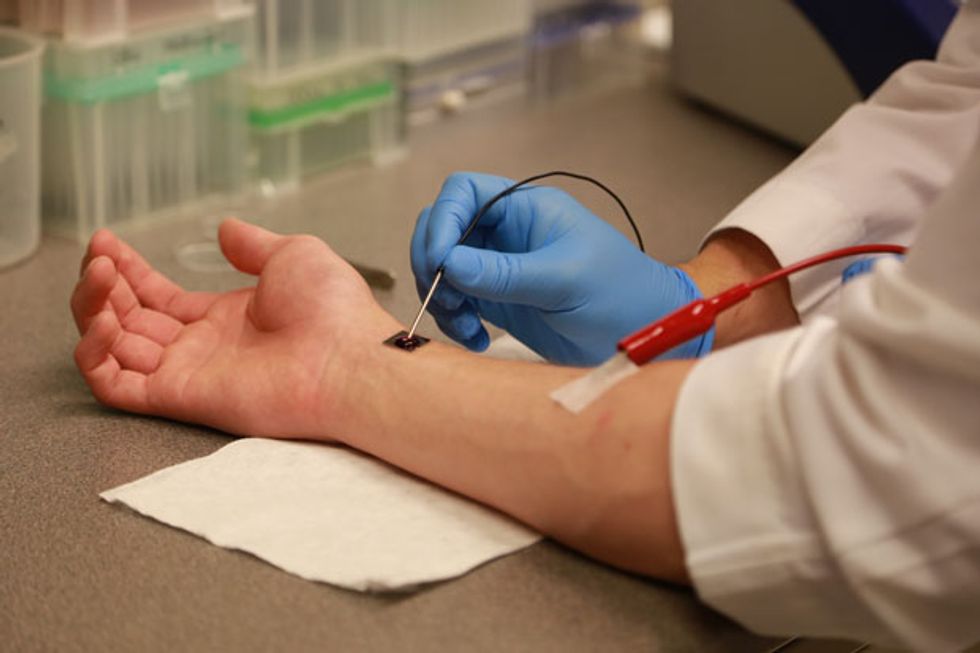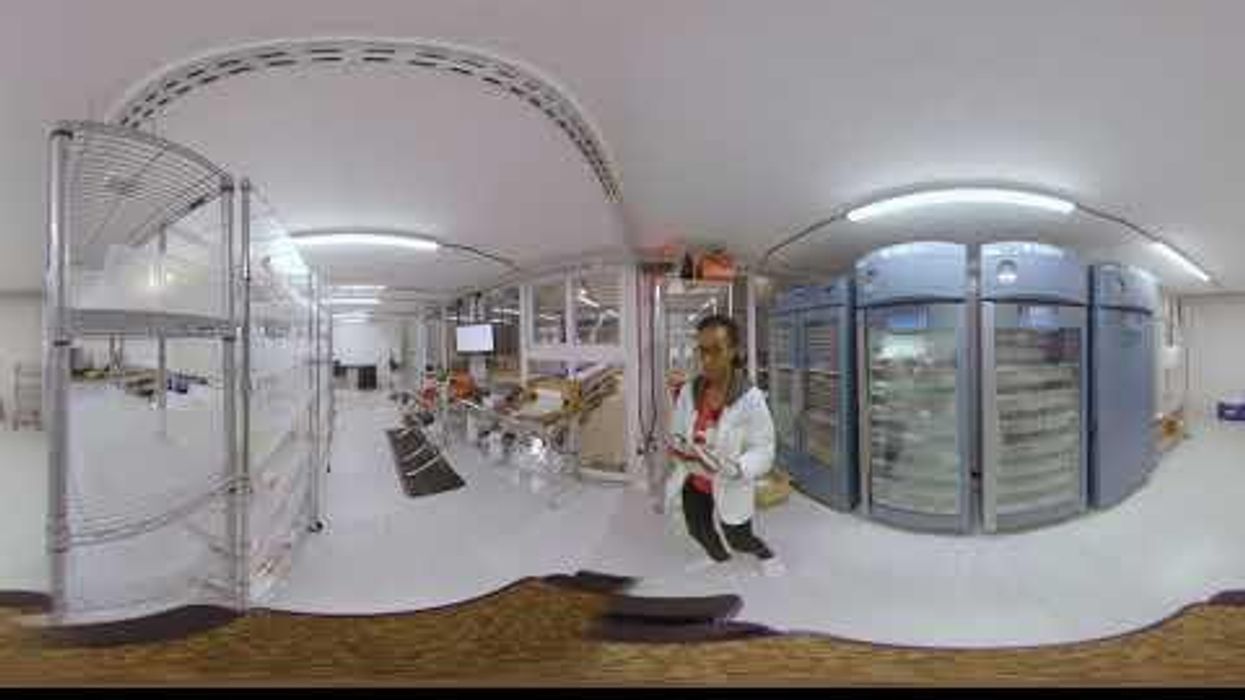Researchers at Ohio State University developed a way to change cells inside the body from one type to another—with just one touch from a nanochip. This new technology, called “tissue nanotransfection,” could be used to repair and regenerate body tissues, including organs, in a way that is non-invasive and painless.
“When these things come out for the first time, it’s basically crossing the chasm from impossible to possible,” says Chandan Sen, co-leader of the study. “We have established feasibility.”
Previously, experiments with this sort of cell type conversion were done outside the body, in petri dishes. Even if cells from the test subject were removed from the body, converted in the lab, and then reinserted into the body, those new cells often incited an immune response and were rejected. Sen’s method is unique because the conversion takes place entirely inside the body, preventing an immune response. But working in the body can be complicated.
“The moment you go in vivo the complexity is significantly elevated, and now you have to deal with a lot of parameters that are beyond your control,” says Sen.
To keep it simple, Sen’s trials focused on skin cells in mice and pigs. The first step is to place the nanochip on the affected area. When the chip touches the skin, it sends a snippet of synthetic DNA into the surface cells using an electric current, which lasts less than one tenth of a second. The genetic code of the synthetic DNA differs depending on the desired outcome. For example, if the researchers want to convert the skin cells to nerve cells, they use a different code than they would use to convert the skin cells to bone cells.
One of Sen’s experiments successfully healed a mouse’s injured leg. Because scans showed a lack of blood flow in the mouse’s leg, researchers inserted DNA that would change skin cells to the endothelial cells that form blood vessels. Within a week of treatment, the mouse had blood flowing through its leg again. Not only did the the process work to reprogram local cells at the site of the injury, but the entire leg was affected. This is because the mouse’s body also did some work to repair itself.
“There are steps that the body itself mounts for its own rescue,” says Sen. “So what is happening here is we’re enabling the body’s rescue system by tipping it off in a positive way.”
In the experiment with the mouse’s leg, the mouse’s immune system took cues from the injected DNA and generated its own new cells to help it heal faster. It’s hard to know, however, if the body will always respond favorably. And that’s why more research has to be done.
Robert Diegelmann, an expert in tissue injury and tissue repair, sees Sen’s work as the key to unlocking a lot more information about how we can reprogram cells inside the body.
“A lot more research has to be done to specifically target cells other than fibroblast [skin] cells, and to reprogram certain genes, but what he’s got here is really exciting,” says Diegelmann.
Sen and his team want to continue experimenting with the technology and they plan to run clinical trials on humans next year. Working on animals is less risky, but it it’s also less realistic, because it doesn’t take into account the human body’s own response.
“Of course, there will be problems but over time we will fix those problems,” says Sen.



